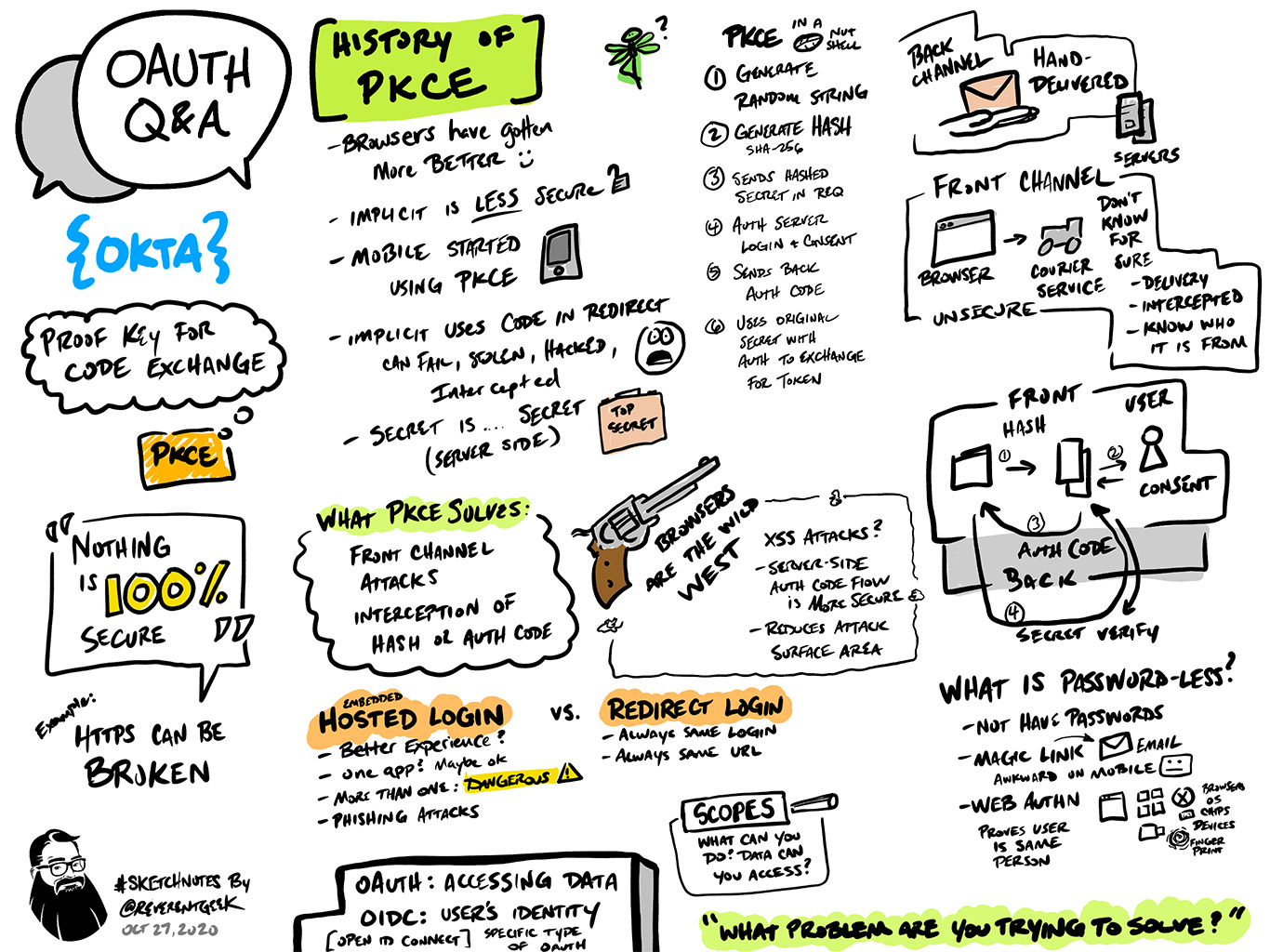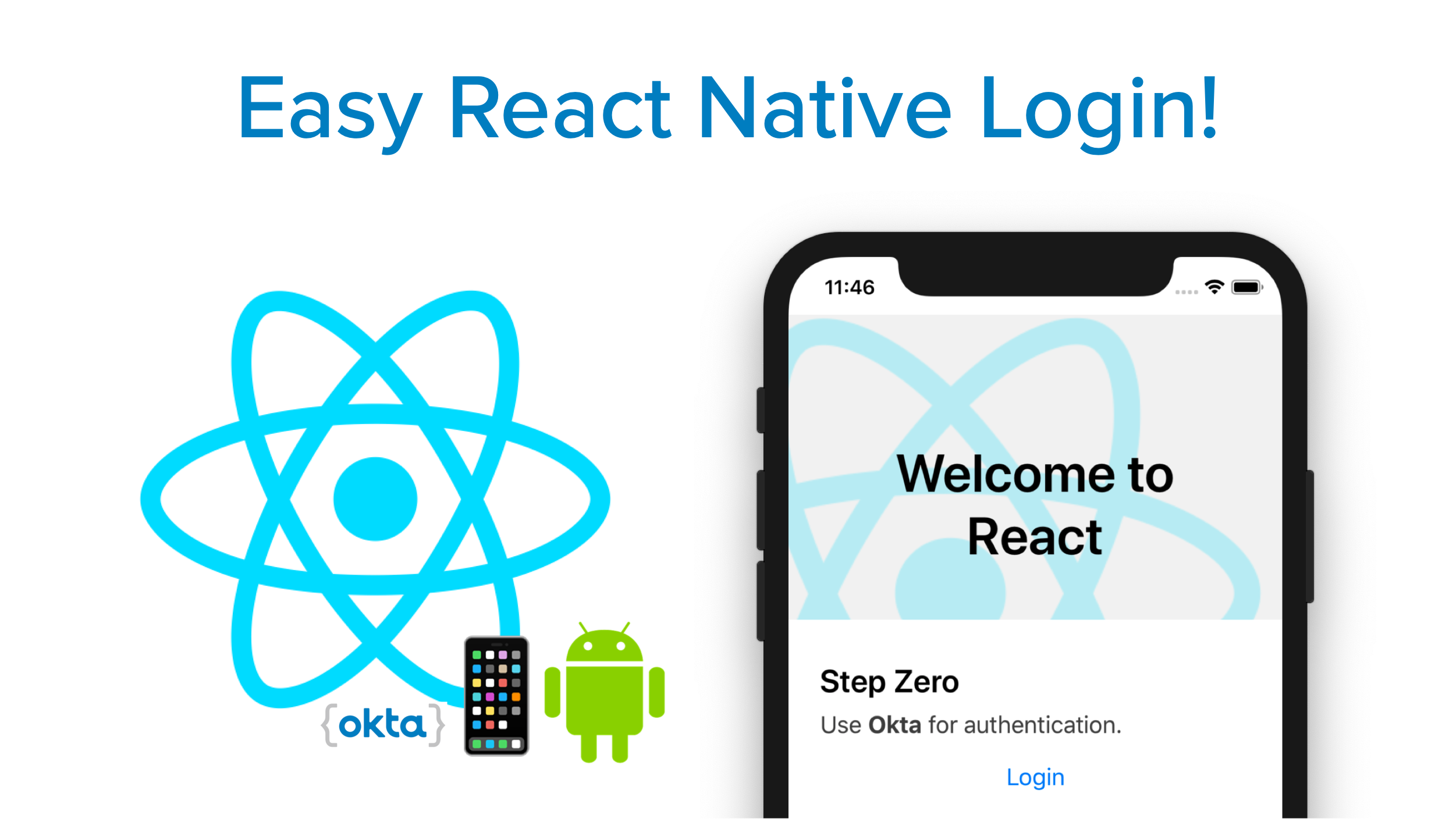Articles tagged pkce
Secure Your Express App with OAuth 2.0, OIDC, and PKCE

Every web application needs authentication, but building it yourself is risky and time-consuming. Instead of starting from scratch, you can integrate Okta to manage user identity and pair Passport with the openid-client library in Express to simplify and secure the login flow. In this tutorial, you’ll build a secure, role-based expense dashboard where users can view their expenses tailored to their team. Check out the complete source code on GitHub and get started without setting...
OAuth Sketch Notes - Live Q&A

Why do we need PKCE in OAuth? How does PKCE work? What’s the difference between the front channel and back channel? Can SPAs even use a back channel? These are just a few of the things we talked about during this sketch notes livestream! Developer advocates Lee Brandt and Aaron Parecki discuss PKCE, cross-site scripting, OAuth vs OpenID Connect and more, all while David Neal sketched notes live! Some of the other topics covered include...
Create a React Native App with Login in 10 Minutes

React Native is a mobile app development framework that allows you to use React to build native iOS and Android mobile apps. Instead of using a web view and rendering HTML and JavaScript, it converts React components to native platform components. This means you can use React Native in your existing Android and iOS projects, or you can create a whole new app from scratch. In this post, I’ll show you how to add a...
Implement the OAuth 2.0 Authorization Code with PKCE Flow

Imagine two levers that are inversely connected. That is, as one goes up, the other goes down. One lever is User Experience and the other is Security. It’s not a perfect analogy, but most developers can attest that as user experience goes up, security goes down. Take browser history syncing for example. I can start a session with my bank on Firefox mobile and pick up right where I left off on Firefox desktop. From...
Is the OAuth 2.0 Implicit Flow Dead?

You may have heard some buzz recently about the OAuth 2.0 Implicit flow. The OAuth Working Group has published some new guidance around the Implicit flow and JavaScript-based apps, specifically that the Implicit flow should no longer be used. In this post we’ll look at what’s changing with the Implicit flow and why. Note: In May 2025, the Okta Integrator Free Plan replaced Okta Developer Edition Accounts, and the Okta CLI was deprecated. We preserved...